Giving yourself a beneficial infusion means obtaining health benefits from the various components, which in the case of this herbal tea, are many.
The soft flavor is combined with thirst-quenching qualities, which refresh and allow you to take in various nutrients.
Lemon and cream infusion: properties and benefits
The infusion is made up of panacea such as sencha green tea , which becomes a source of vitamins in our body. In particular, this tea has B vitamins, vitamin C and vitamin P . In addition to strengthening our immune system, this component helps circulation (maintains the elasticity of blood vessels). In addition, it provides various minerals such as potassium, fluorine and manganese.
Contains a useful antioxidant, catechin , which gives astringent properties, aids in proper digestion, and is known for its energizing action.
It is also useful for the purifying characteristics , excellent for the liver, and represents a draining substance.
These qualities are enhanced by the presence of calendula and nettle - considered natural anti-inflammatory plants for the urinary tract, and beneficial for the prostate. The nettle also gives our body good doses of iron and silicon, useful for supporting our energy.
The fundamental part of the infusion, that of the lemon zest, allows to obtain even more benefits for the organism. We know that it contains a good dose of vitamin C, which boosts our immune system, aids in the absorption of iron, and is a natural antibacterial. Furthermore, lemon zest makes available several antioxidants and flavonoids, which also help in the prevention of cholesterol, together with nettle which helps the metabolism of sugars.
Lemon and lemongrass in the infusion, give limonene and other antioxidants useful for blood and lymphatic micro circulation, with beneficial effects also on diuresis.
The presence of yerba mate provides this infusion with precious, energizing and central nervous system qualities.
This plant provides caffeine and theobromine, with tonic actions to counteract tiredness, fatigue and stress. It is a stimulant for improving physical performance and concentration-attention.
It favors those who practice sports or study , and does not involve agitation or headaches. In addition, it can help those who want to calm the sense of hunger.
To give body to the infusion, there are cocoa peels that help digestion and increase the energizing properties of the blend due to the mate. In addition to the skins, more full-bodied ingredients are rice flour and dates.
The date inside the infusion, in addition to giving vitamins and mineral salts, helps to soothe digestive inflammations, and with the fibers it is useful in case of constipation.
Origins and History of cultivation
The infusion is rich in ingredients, with different berries, leaves or other parts of medicinal plants that help the well-being of our body.
The blend of this infusion uses several ingredients: lemongrass, mate, lemon zest, date, rice flour, sencha green tea, nettle, calendula, cocoa husks. These ingredients, from plants to husks or grains, have been part of our culture for centuries, except for cocoa husks, green tea and mate, which were the heritage of Native Americans and South Americans before European explorations.
Today we can include these ingredients in our diet, through a beneficial infusion, among the many herbal teas. Furthermore, it is possible to obtain this infusion in all seasons, thanks to the food drying processes.
Plant and flowers
The lemon fruit comes from the Citrus limon plant, native to Asia, as part of the Rutaceae botanical family. Known for its beneficial fruits and fragrant flowers, lemon gives different types of fruits, from light yellow to warm yellow. The plant prefers tropical and subtropical climates.
Sencha tea always comes from the plant of Camellia sinensis, of the Theaceae family. It represents a variety of it, and is native to'Tropical Asia.
It is grown in full sun, in the typical low bushes. The first harvest of the leaves takes place at the beginning of May, and in this case it is new tea, while the second harvest takes place at the end of June and the third at the beginning of August. After harvesting, the leaves are steamed, dried and rolled.
The Ilex paraguanenis plant, a tree native to subtropical South America, is known as Mate or Matè. It is part of the holly family, Aquifoliaceae and can usually grow up to 8 meters. It is the raw material for the so-called yerba mate or chimarrão: traditional South American infusions.
Citronella, called Lemongrass, is a plant belonging to the Poaceae family and to the Cymbopogon genus. Native to tropical areas of Asia, it is a grass that grows in bushes up to one meter in height.
Urtica dioica is a perennial flowering herbaceous plant of the Urticaceae family. Native to Europe, temperate Asia and western North Africa, it is now widespread all over the world. The species is divided into six subspecies, with prickly hairs on the leaves and stems, which act like hypodermic needles, injecting histamine and other chemicals that produce a stinging sensation upon contact.
The cocoa peels derive from the plant of the genus Theobroma cacao, native to Central America. The natural cultivation place of cocoa is the equatorial one, with a hot and very humid climate.
Dates are the berries of the Phoenix dactylifera, a palm belonging to the Arecaceae (Palmae) family. Its developed roots find water even deep in the most arid territories, and can reach heights of up to 30 meters.
Calendula officinalis is an annual plant, part of the Asteraceae - Compositae family and comes from the Asterales order.
It is grown in fairly fertile soils, well drained and in full sun, in flower beds, borders, home gardens, and in pots. It is a perennial plant, whose green leaves are known for their intense aroma, and the flowers are yellow-orange and appear all year round.
Nutritional values of the lemon infusion
The infusion contains many nutrients, due to the variety of ingredients. There are certainly many antioxidants and vitamins A, B, C.
It makes available different flavonoids, coumarins, phenolic acids, tannins, limonene, theobromine, and energizing substances such as caffeine and theine, and theanine. Among the minerals there is an abundance of potassium, iron, magnesium .
How to use the ingredients in the herbal tea
The infusion is obtained by placing about 3-5 grams of the mixture of lemon and cream with water at 100 ° C into a cup (250 ml). Leave to infuse for 10 to 12 minutes, before drinking the herbal tea.
Add honey or sugar if desired.
Lemon and cream infusion: side effects and contraindications
Most of the ingredients in this tea are generally safe to consume, with little or no side effects.
However, for those who are allergic to certain foods, such as citrus fruits, the herbal tea could cause symptoms of hives.
It is good to respect the recommended doses, to avoid episodes of gastric reflux and heartburn; in addition to the possible agitation due to the presence of mate and cocoa peels.
Excessive use is not recommended for those suffering from diabetes, due to the possibility of an increase in blood sugar, due to the sugars present in the infusion (dates, cocoa husks, rice flour) .


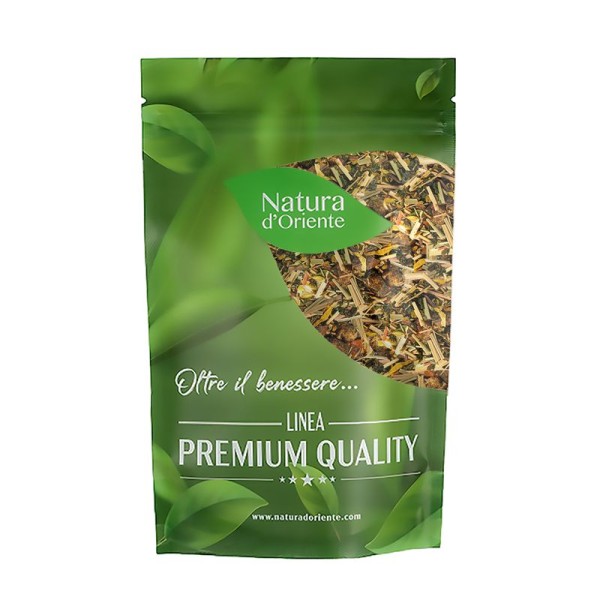








 No reward points for this product.
No reward points for this product.
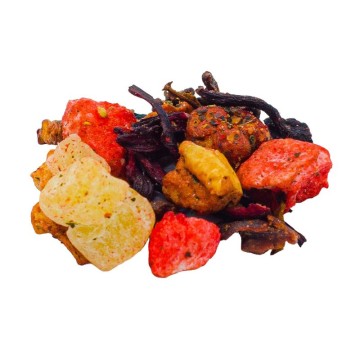
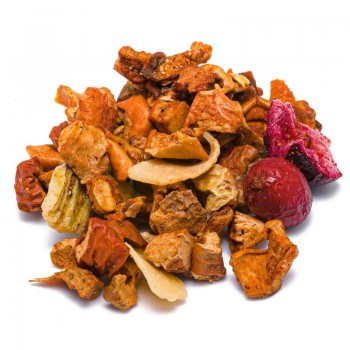
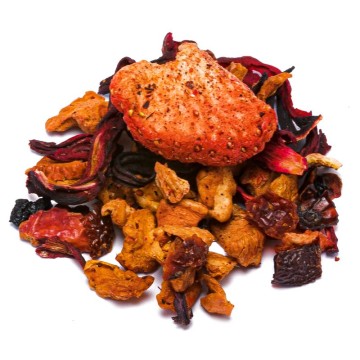
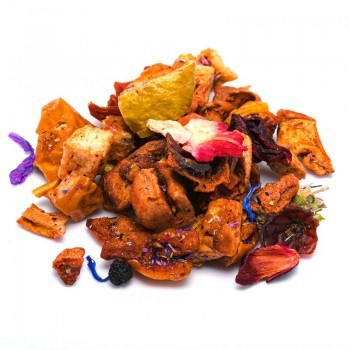
![infuso pesca melone [Natura d'Oriente]](https://www.naturadoriente.com/3535-home_default/infused-peach-melon.jpg)
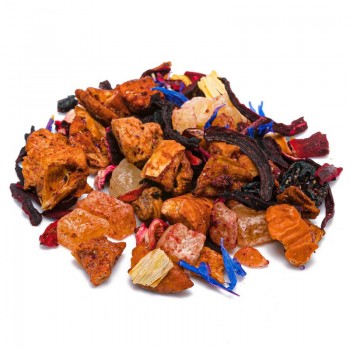
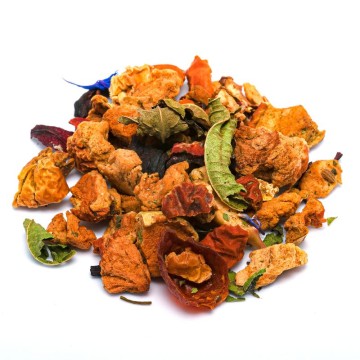
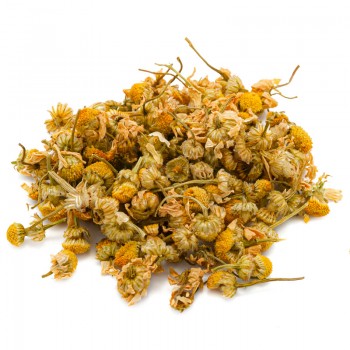
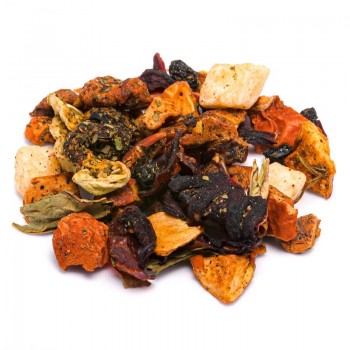
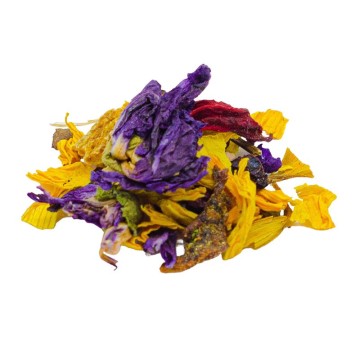
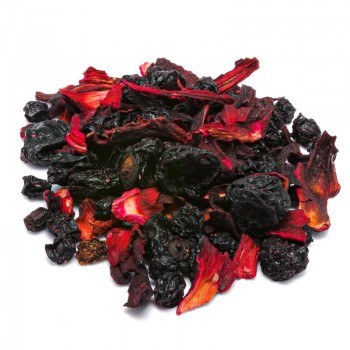
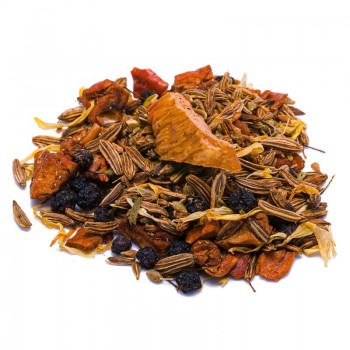
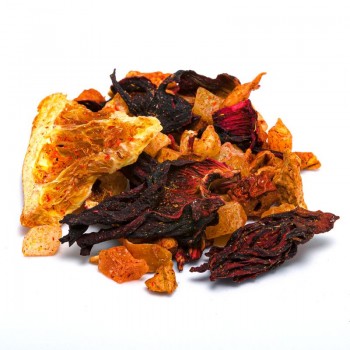
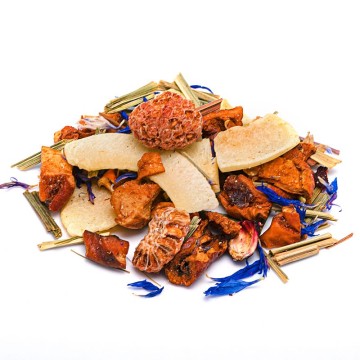
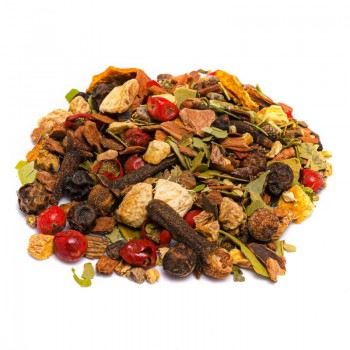
![infuso relax [Natura d'Oriente]](https://www.naturadoriente.com/3555-home_default/infused-relaxation.jpg)